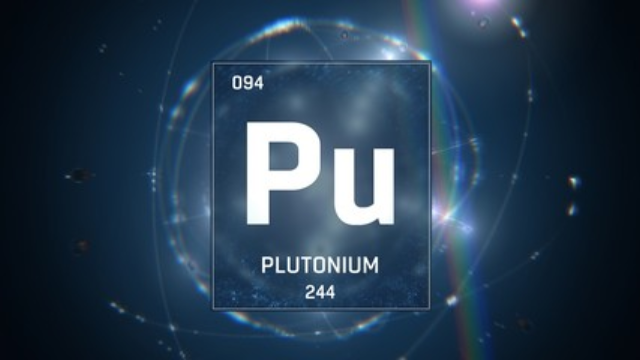Ever wondered why we don’t use plutonium in nuclear reactors? It’s not because we can’t, but rather because it’s complicated, risky, and costly. This article pulls back the veil on the murky world of plutonium, comparing it to uranium, detailing the extraction process, safety risks, and cost factors. We’ll also delve into the international regulations surrounding its use. So, if you’ve ever been curious about the reasons for plutonium’s absence in nuclear power, you’re in the right place.
Understanding Plutonium’s Radioactive Properties
To grasp why plutonium isn’t commonly used in nuclear reactors, you’ll need to delve into its radioactive properties. One of the critical aspects you’ll come across is plutonium toxicity. Being a highly toxic and radioactive element, plutonium poses significant health risks. Even a microscopic amount can lead to severe radiation poisoning if ingested or inhaled.
Now, let’s talk about plutonium decay. Here’s where things get a bit tricky. Plutonium-239, the isotope used in nuclear reactors and weapons, has a half-life of 24,000 years. This means it remains radioactive for an incredibly long time, continually emitting harmful radiation. Its decay process also results in the production of other hazardous isotopes, adding to the overall risk.
Handling and storing plutonium pose significant challenges due to its toxicity and long half-life. Any mishandling can lead to catastrophic consequences, both for humans and the environment. Moreover, plutonium’s use in reactors also raises potential proliferation concerns, as it can be used to create nuclear weapons.
The Complexity of Plutonium Extraction
Beyond the dangers of handling and storing plutonium, you’ll find that its extraction process is incredibly complex and energy-intensive. You have to understand that obtaining this element isn’t as simple as mining for coal or drilling for oil. Plutonium doesn’t occur naturally in large quantities. Instead, it’s produced through the irradiation of uranium in nuclear reactors. This is then followed by a series of complex chemical processes to isolate the plutonium.
The concept of plutonium recycling, which involves reprocessing spent nuclear fuel to extract plutonium and uranium for reuse, seems like a more efficient approach. However, you’ll soon realize that it presents its own set of challenges. Not only does it require highly specialized equipment and technology, but it also raises significant concerns about plutonium proliferation.
Plutonium proliferation is a critical issue as it pertains to the potential misuse of the element for the production of nuclear weapons. This risk, coupled with the technical difficulties of plutonium extraction and recycling, largely explains why plutonium doesn’t feature prominently in nuclear reactors. In essence, the complexity of plutonium extraction makes it a less viable choice for energy production.
Safety Risks Associated With Plutonium
In your journey to understand why plutonium isn’t widely used in nuclear reactors, it’s crucial to consider the safety risks linked with this element. These risks are primarily centered around two key areas: plutonium waste disposal and plutonium transportation hazards.
Plutonium is a highly radioactive and toxic element. This poses significant challenges in terms of its disposal. The long half-life of plutonium-239 (24,000 years) means that waste materials remain hazardous for thousands of generations. This necessitates extremely careful and secure storage.
Transporting plutonium also presents serious risks. Accidents during transport can lead to environmental contamination and pose a public health risk. There’s also the threat of potential theft, with plutonium being a key ingredient for making nuclear weapons.
To summarize, the safety risks associated with plutonium include:
- Long-term hazards related to plutonium waste disposal
- Risk of environmental contamination during transport
- Public health risks from potential transport accidents
- The threat of theft and misuse for nuclear weapons
These factors significantly contribute to why plutonium isn’t the first choice when it comes to fuel for nuclear reactors.
The Cost of Plutonium Processing
You’d find that the cost of plutonium processing is another crucial factor that limits its use in nuclear reactors. Plutonium affordability is hindered by the high costs associated with its extraction, refinement, and conversion into a usable form. This is aside from the cost of ensuring safe handling and storage.
When it comes to processing efficiency, the energy and resources required to extract plutonium from spent nuclear fuel are substantial. The process involves chemical separation techniques that are not only costly but also technically challenging. The cost-effectiveness of the process is thus highly questionable.
To illustrate, consider the following table:
| Processing Stage | Cost (per kg) | Efficiency |
|---|---|---|
| Extraction | $1000 | 70% |
| Refinement | $2000 | 50% |
| Conversion | $2500 | 40% |
From this, you can see that as you move through each stage, the cost increases while the efficiency decreases. This makes the overall process both expensive and inefficient. Thus, despite its potential benefits, the prohibitive cost and low efficiency of plutonium processing are key reasons why it’s not commonly used in nuclear reactors.
Uranium Vs. Plutonium in Nuclear Power
Despite the high costs and inefficiencies you’ve seen with plutonium, when it comes to nuclear power, there’s a distinct difference between the use of uranium and plutonium. Here’s why:
- Plutonium Efficiency: Plutonium-239, while efficient in energy production, is costly and complex to produce. It requires a series of intricate processes, including breeding in a nuclear reactor, reprocessing spent fuel, and handling highly radioactive materials.
- Uranium Abundance: Uranium, on the other hand, is abundant in nature. It’s easy to mine and process, making it a more cost-effective choice for nuclear power.
- Plutonium Risks: Plutonium’s radioactivity poses significant health and environmental risks. Its long half-life means harmful effects can persist for thousands of years.
- Uranium Safety: Uranium, while still radioactive, is generally considered safer. Its radioactivity is lower, and it’s less likely to be used for nefarious purposes, such as weapon production.
In essence, while plutonium is more efficient in energy production, its high cost, complexity, and potential risks outweigh its benefits. Conversely, uranium’s abundance, ease of processing, and safety aspects make it the preferred choice for powering nuclear reactors.
International Regulations on Plutonium Use
Beyond the reasons related to cost, complexity, and safety, there’s another hurdle in your path if you’re considering the use of plutonium in nuclear reactors – international regulations. Plutonium trade and diplomacy are subjects of intricate international laws, aimed at preventing its misuse.
These regulations can be summarized in a three-column, five-row table:
| Regulation | Purpose | Impact on Plutonium Use |
|---|---|---|
| Non-Proliferation Treaty (NPT) | Prevents proliferation of nuclear weapons | Restricts plutonium trade and use |
| International Atomic Energy Agency (IAEA) Safeguards | Monitors nuclear material and activities | Imposes stringent controls on plutonium |
| Plutonium Management and Disposition Agreement (PMDA) | Aims to dispose of excess weapon-grade plutonium | Limits use of plutonium in reactors |
| Nuclear Suppliers Group (NSG) Guidelines | Regulates nuclear exports | Impacts plutonium trade |
| Convention on Nuclear Safety (CNS) | Promotes high standards of nuclear safety | Influences safety measures in plutonium use |
These regulations not only affect the availability of plutonium but also its applications and handling. It’s clear that the use of plutonium in nuclear reactors isn’t just a simple matter of choice or preference; it’s tightly bound by a complex web of international rules and treaties.





